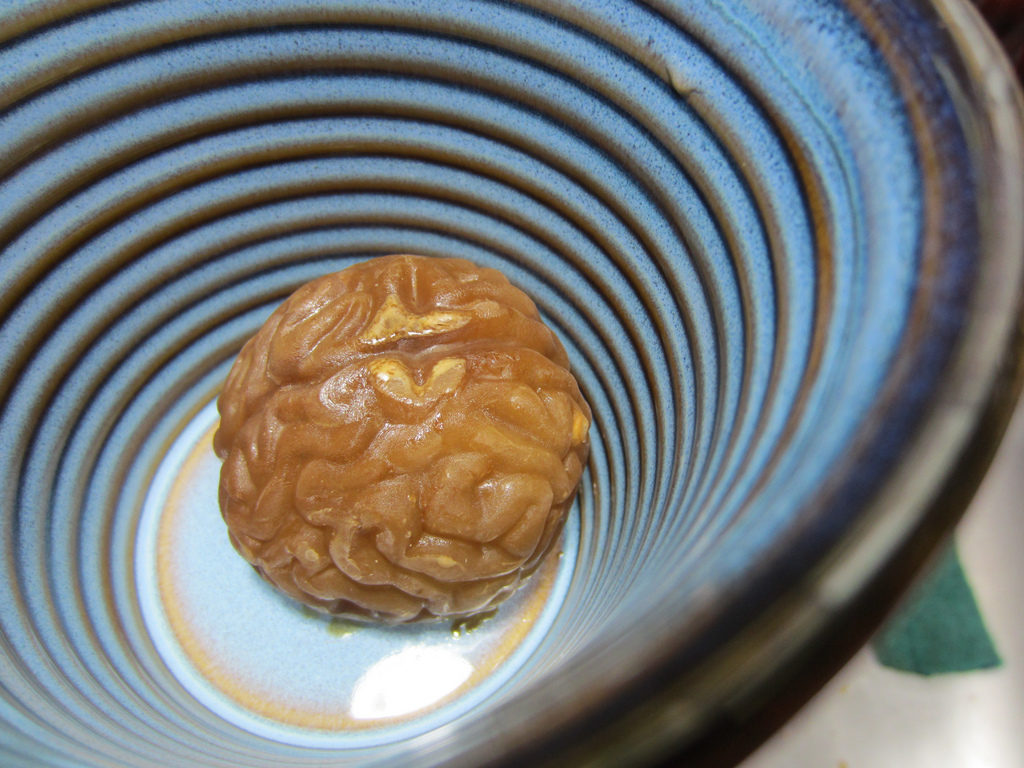A new study, published in the journal Human Brain Mapping, questions previous findings that specific brain regions are implicated in particular mental health conditions. Instead, according to the researchers, biased study design and the difficulty of publishing negative findings may have led to inaccurate results. While the researchers did find some differences in brain activation between people with mental health conditions and people without mental health conditions, they were not able to discriminate between specific diagnoses. The current study suggests that there are few, if any, differences in brain regions activated by specific mental health conditions. That is, there is still no brain scan that can tell whether a person has depression, social anxiety, or schizophrenia, for example.
Researchers have theorized that the different symptom clusters that form mental health diagnoses are linked to specific regions of the brain. If confirmed, such a finding would suggest that mental health diagnoses have biological components that could be targeted medically. However, the finding of the current study undermines this theory. Instead, the results indicate that while there is a general tendency for large parts of the brain (such as the amygdala and the hypothalamus) to be activated in a number of mental health conditions (as well as when humans are under stress in a number of ways), there is little difference between the varying diagnoses—even for diagnoses as seemingly different as social anxiety, depression, and schizophrenia.

The researchers were led by Emma Sprooten (Department of Psychiatry, Icahn School of Medicine at Mount Sinai, New York City). They used statistical tests to combine the results from 547 studies, which enabled them to analyze the data from 21,692 participants. The studies compared the brain scans of healthy participants with participants who were diagnosed with major depressive disorder, bipolar disorder, schizophrenia, obsessive compulsive disorder (OCD), and anxiety disorders, including social anxiety disorder, generalized anxiety disorder, panic disorder, specific phobias, and post-traumatic stress disorder (PTSD).
The studies in question used functional magnetic resonance imaging (fMRI), a common type of brain scan which creates images based on blood oxygenation levels within the brain. Higher blood oxygenation levels are assumed to indicate areas involved in more activity. Thus, an fMRI result is theorized to indicate which areas of the brain are activated or deactivated for particular tasks or states of being.
Importantly, fMRI has endured its own questions of bias. A recent article, published in the Proceedings of the National Academy of Sciences, confirmed a previous finding that up to 70% of the results in fMRI studies may actually be “false positives”—that is, finding a result when there actually is none. Nikos K. Logothetis wrote, in a 2008 article in Nature, that the fMRI “is an excellent tool for formulating intelligent, data-based hypotheses, but only in certain special cases can it be really useful for unambiguously selecting one of them, or for explaining the detailed neural mechanisms underlying the studied cognitive capacities.” That is, fMRI results can inform the questions we ask, but they can rarely answer those questions. Unfortunately, the neuropsychiatric literature is riddled with fMRI studies that purport to do just that.
Another recent study attempted to showcase just how much fMRI results rely on subjective interpretation. The researcher, Joshua Carp of the University of Michigan, examined a single fMRI event and found that there were 34,560 different results that could be reached by following different analysis procedures. He argues that the choice of analysis procedure is a subjective one, and researchers may try numerous procedures in order to achieve a positive result. He suggests that in the future, researchers must clearly specify which procedure they will use in order to reduce this extraordinary bias.
Sprooten and her colleagues framed their results as addressing the common practice of “reverse inference,” which has been challenged by other researchers as well. In reverse inference, researchers pre-select which brain regions (ROIs) they are going to study in order to maximize potential results—rather than examine the whole brain to determine which areas are activated. Put simply, if you study a particular area, then you will never see if there is activation in other brain regions during your test. You will only find activation in your pre-selected area. This result is often taken to indicate that particular disorders are associated with activation in particular regions—but this conclusion rests on the assumption that researchers would not have found other areas had they examined the whole brain.
The strength of the current study was its ability to compare ROI studies (studies that focused on only specific regions of the brain) with the results from whole-brain studies. The ROI studies tended to find differences in which brain regions were activated by different mental health conditions. However, once the whole-brain studies were factored in, these findings disappeared. When all studies were included, there were no differences between the diagnoses.
Notably, the researchers only included studies that found significant results—that is, those that purported to find differences between those with mental health diagnoses and those without. Their results would likely be even more striking if they factored in the studies with negative results—studies that did not find differences.
Sprooten writes:
“The pre-selection of ROIs, possibly in combination with the difficulty of publishing negative results, seems to bias the literature and may indirectly lead to oversimplification and over-localization of neurobiological models of behavior and symptoms.”
Choosing a brain region to examine, rather than examining the whole brain, appears to lead to biased, oversimplified results. Likewise, the conclusion that Logothetis reaches in his Nature article is that “the limitations of fMRI are not related to physics or poor engineering, and are unlikely to be resolved by increasing the sophistication and power of the scanners; they are instead due to the circuitry and functional organization of the brain, as well as to inappropriate experimental protocols that ignore this organization […]The magnitude of the fMRI signal cannot be quantified to reflect accurately differences between brain regions, or between tasks within the same region.”
The study conducted by Sprooten and her colleagues suggests that many fMRI studies misrepresent the abilities of brain scans. As Logothetis argues, using fMRI results to confirm pre-existing theories of brain region activation in mental health diagnoses is in direct contradiction of the abilities of the fMRI technology. In short, brain scan research is of limited use in explaining the complex psychological states of human beings. If a neurological answer seems clear and easy, it may be being misrepresented and oversimplified.
****
Sprooten, E., Rasgon, A., Goodman, M., Carlin, A., Leibu, E., Lee, W. H., & Frangou, S. (2016). Addressing reverse inference in psychiatric neuroimaging: Meta-analyses of task-related brain activation in common mental disorders. Human Brain Mapping. doi:10.1002/hbm.23486 (Abstract)















I’m trying to figure out what exactly the differences between the “patients” and the “normals” could be. One thing comes to mind: A recent study showing people living in areas with less green and blue experience more anxiety and other problems than people in areas with lots of green and blue: “Our analyses do indeed show a relationship between GSA [green space availability] and any anxiety disorder, with prevalence being lower when more green space is available…BSA [blue space availability] was related to all health variables, with the exception of any substance use. Moreover, its associations with these health variables were stronger than those of GSA.” https://www.madinamerica.com/2016/12/access-green-blue-spaces-may-improve-mental-health/
Maybe the “patient” group has a disproportionately large number of city-dwellers? I don’t know, it’s just a wild guess. Is there any data on whether people who live in cities are more likely to encounter psychiatry than others?
Report comment
The problem is that there are so many variables that affect “mental health” that none of them will ever be “the cause,” but if a researcher wants to create a study to suggest a correlation, they can often find one. I am sure green space improves “mental health” variables, but so does good nutrition, sex, having parents who love you, having current positive relationships, being in chronic pain, the list goes on and on. Bottom line, it is pointless to look at the brain as the cause of any “mental health condition,” as they are all made up from social biases anyway and there is no reason to think any of them has one single cause.
Report comment
Thanks for this very useful article.
Report comment
I don’t know about the lack of difference. http://www.smithsonianmag.com/science-nature/the-neuroscientist-who-discovered-he-was-a-psychopath-180947814/
Report comment
An article about one person supposedly being a “psychopath” and supposedly having a brain that differs from a “normal” control group is related to an article about a meta-analysis of brain scans showing no difference between several different disorders…how?
Report comment
a PET brain scan VS a MRI brain scan.
Report comment
There is also the question of what effect do psycho-active drugs have on brain scans. When it comes right to down to it, without some kind of reliable research on the matter, when we look at brain-scans, we don’t know whether we are looking at activity from “mental disorders”, or from the drugs used to treat those “mental disorders”. This study found that there was a little difference between the brain scans of people with diagnostic labels and people without those labels. What it doesn’t explain is whether that difference was due to the psychiatric label, or the drugs used to treat the label. It is possible that, if psychoactive drugs were factored in, this difference could be even smaller than their findings indicate.
Report comment
I also think the part about leaving out negative results is important. Only significant positive results are included.
Report comment
well that’s this research money down the drain then https://www.nimh.nih.gov/news/media/2014/brain-initiative-as-moonshot.shtml
As John Reid said about brain related mental health research, when it proves nothing: “Can we have the money back?”
Report comment
It would be more (most?) amazing if these researchers actually found out something coherent, as neither the methods nor the diagnoses are particularly coherent by themselves. Results under these conditions would be something like all the world’s great literature actually produced by the legion of typist monkeys randomly punching their typewriter keys.
Report comment
I was going to say, it’s a good thing the psychiatric industry wasted so much money on purchasing these machines. “Can we have the money back” is right.
Report comment
Why are we even worrying about such a thing? And who decides who is mentally ill and hence to be scanned?
Why aren’t we simply standing up for those who have been abused and marginalized, instead of playing footsie with the mental health system and debating them on their own turf?
Why do we even worry about something like mental illness, given that it is obviously bogus and just a way to further abuse the survivors of abuse.
Question to MIA and it’s Authors, have you ever listened to a political activist?
http://freedomtoexpress.freeforums.org/ever-listened-to-a-political-activist-t414.html
Nomadic
Report comment
Again we have an ostensibly well-intentioned study which is largely meaningless from the start, as it assumes the “mental health” narrative as a given. Nonetheless, it is noteworthy that even within their own parameters the claims of “biological” psychiatrists have once again been shown to be unfounded.
Report comment
Bingo.
Report comment
Peter Simons,
I read quickly your article. I did not felt inspired to dig further.
I subject is good. I believe is a subject worthy to explore.
But does not adds nots special… changes nothing. Is not a particulary useful article.
English is not my native language, but hope that despite that you may still consider this:
We need better (not more), information. We need more clarity, better focus.
And please dont reply: “write that yourself”.
If we dont see why… are are where we are… we wont go anywhere.
Sorry if i seem too critical, and dont point the faults. I do that hoping you improve in the future.
I see you write about actual topics, and touch where is needed. Yet… try to do better.
Report comment
I highly doubt that reliable brain activation patterns will ever be found for any fabricated DSM disorder.
If brain reliable differences are found associated with particular labels, in my view they should be primarily differences of degree or intensity corresponding to the way multiple linked brain structures respond to greater or lesser amounts of stress.
They would not likely be differences of kind (as opposed to degree) – i.e. not differences of kind or differences in location of brain-part activation correlating to one “disorder” over another. In this vein, one would expect those labeled “schizophrenic” to have more severe expressions of certain brain responses associated with stress than those labeled “anxious” or “obsessive” for example. But the brain regions activated in people given more “severe” labels would probably be many of the same parts to varying degrees as those observed in less severe labels, and simply be more severe expressions of the same phenomena. And the labels themselves would explain nothing, just like knowing which brain regions activate would explain nothing at all about how to talk to, understand and help a person at an interpersonal level.
Within the next 10-15 years, it can be predicted that the NIMH’s current RDOC (Research Domain Criteria) search for brain activation patterns correlating to DSM disorders will fail to produce reliable results. The question then is what will happen. Probably some new doomed scheme of biological categorization will be invented, with more requests for ongoing funding. The goal, as always, will be to “Extend and Pretend” – to maintain the status quo in terms of funneling money to biological researchers and to Big Pharma companies. The other goal will be continuing to sell as many drugs as possible via misleading psychiatrists and clients into believing that the drugs are highly effective, and to keep enough people believing that psychiatric drugs are “medications” targeting specific “illnesses”.
Here is a link to an Allan Schore piece on trauma and brain activation, which explains how stress early in life produces common brain responses across a range of supposed psychiatric diagnoses. Reading this, it’s obvious that brain studies will never produce reliable results for individual illusory psychiatric disorders. People are too individual to fit a label and, paraxodically there are too many commonalities in the ways in which people’s brains respond to stress both less and more severe for distressing experience to fit neatly into different supposed disorders. The current biological research is about profit and social control, not about understanding or helping.
http://www.allanschore.com/pdf/SchoreIMHJTrauma01.pdf
Report comment
From what I know about psychiatry reverse inference seems to be the norm. Evidence based psychiatry is rare indeed, despite all the posturing and posing about what an exact, hard science it’s supposed to be.
Psychiatrists make assumptions and set out to prove them, despite evidence to the contrary already present. Worse yet, they model all their dangerous experiments (on those they call mentally ill) on these still unproven assumptions.
Report comment